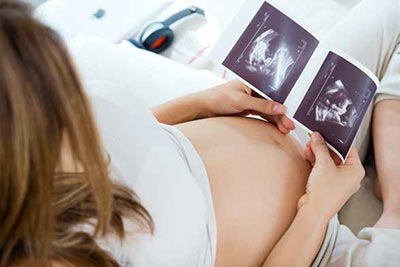
It was a different world 40 years ago. There was no home pregnancy test to give you immediate results within days of conceiving. Instead, we waited on the physical manifestations to appear (or not appear, such as the absence of our monthly visitor) and let the doctor make the diagnosis. We donned large tent-like clothes and made no particular changes other than trying to choke down the giant prenatal vitamins. Pregnancy was no reason to abstain from smoking or, for that matter, downing a few cocktails.

Today’s new mothers start prepping well in advance of becoming pregnant. Many use the latest technology to determine the best time to conceive and begin preparing their bodies for the stress of growing a human. Forty years ago, in vitro fertilization was just a distant dream; today it is commonplace, as are surrogate mothers, and many more couples are able to achieve their dreams of becoming parents. Women cease smoking and drinking, step up their exercise and eat healthy meals. There are scores of books full of advice for childbearing. In the old days, we asked our mothers and their friends which, frankly, was scarier than any book. They delighted in telling us horror stories of excruciating labor lasting for days, swollen ankles, endless morning sickness and bizarre complications. Don’t say I didn’t warn you!
“Start a prenatal vitamin with folic acid, get a checkup with your doctor, see your dentist and quit smoking and drinking.”
Forty years ago, the gender of your child (and sometimes the actual number of babies, such as twins or triplets or even more) was a complete surprise. Old wives (yes, the ones who create tales) had a variety of party tricks to determine the sex, but the accuracy was questionable at best. Without prior knowledge, more than a few nurseries were painted a neutral yellow. Today’s moms know well in advance whether a boy or girl is on the way and most have quite literally seen a clear image of the face thanks to the magic of ultrasound. Indeed, 3D and 4D imaging is becoming a growth business, marketed as enhancing the mother/child bonding experience.
Girl or boy, there is a list of necessary items – it’s a long list, trust me – from diapers (I recommend stocking up in advance because you’ll be shocked at how fast you go through them) to onesies (you’ll need lots of these, too). There is no end to the equipment, some of it quite expensive. Forty years ago, infant seats were merely suggested but not required by law and, compared to current models, were quite rudimentary. Now they take up about half the back seat and require detailed instructions to operate.
And don’t forget the stroller. Used to be babies rode in fancy carriages. Then strollers came into vogue. Because these were all quite bulky and hard to transport, the umbrella stroller was invented. It was lighter and folded up easily. But beware: A fancy stroller and its accessories can top $1,000. And go ahead and add a minivan or SUV to your list of baby needs. You’re going to need a bigger car!

How to Grow a Human
“Focus on eating well,” Dr. Keller said. “Start a prenatal vitamin with folic acid, get a checkup with your doctor, see your dentist and quit smoking and drinking.”
While it is true that expectant mothers are “eating for two,” that does not give them carte blanche to eat everything in sight. Doctors discourage gaining too much weight during pregnancy, recommending increasing food intake by 300 calories per day during the second and third trimesters for women of normal weight. Most doctors can offer diet advice to be sure women consume the proper amounts of protein, carbohydrates, iron and folic acid.
Dr. Keller also encouraged a moderate level of exercise unless there is a medical or obstetrical complication. For most women, 30 minutes per day several times a week is optimal.
“Regular exercise helps to maintain or improve fitness, helps with weight management and improves psychological well-being,” Dr. Keller advised. “Some modifications may be needed due to physiologic changes of pregnancy and fetal requirements.”
Prepare for lots of office visits so the doctor can monitor the pregnancy, at first just monthly and increasing to biweekly or weekly as the delivery date nears. Expect a variety of diagnostic tests, including those for blood type and antibody screening, hemoglobin, pap smear, rubella immunity, STD testing, urine cultures, hepatitis B, gestational diabetes and group B strep. Additional tests may be performed if needed, including those for genetic disorders, screening for Down syndrome and other chromosomal abnormalities. Diabetes and thyroid function tests may also be done.
“Typically, we perform an early ultrasound for dating then an anatomy scan in the second trimester,” Dr. Keller explained. “Other individuals with high risk pregnancies may have more ultrasounds, depending on their condition.”
Dr. Keller also recommended that expectant parents attend childbirth classes and take a tour at the hospital they plan to use.
Then relax and enjoy the last few weeks before the birth. The doctor and hospital team will guide you through the birthing process.
“The best part of my job is taking part in the life-changing moments of my patients and their families,” said Dr. Keller. “It’s a wonderful feeling I get each and every time I deliver.”






